I hope you would enjoyed reading about my Summer trip to Badrinath via Devprayag and Joshimath. In continuation to that travelogue, here is my (long) post on the Things to do in Badrinath and the stories surrounding the temple. The Badrinath temple is situated on the banks of Alaknandha river, just above the Tapt Kun (hot springs). It opens in Summer (May) on or after Akshaya Trithi and Closes around Diwali. In the main sanctum Badri Narayan is seen under a golden figurine of Badari tree, flanked by Kuber and Garuda, Nar Narayan, and Sage Narada. In the Circumambulation passage you can see the deities of Goddess Mahalakshmi, Hanuman and that of Narayan and Nar. Just below, there is a small shrine to Adi Shankara.
Lore of Badrinath
There are many fascinating stories about the Badrinath town and its Lord. Here are some of them.
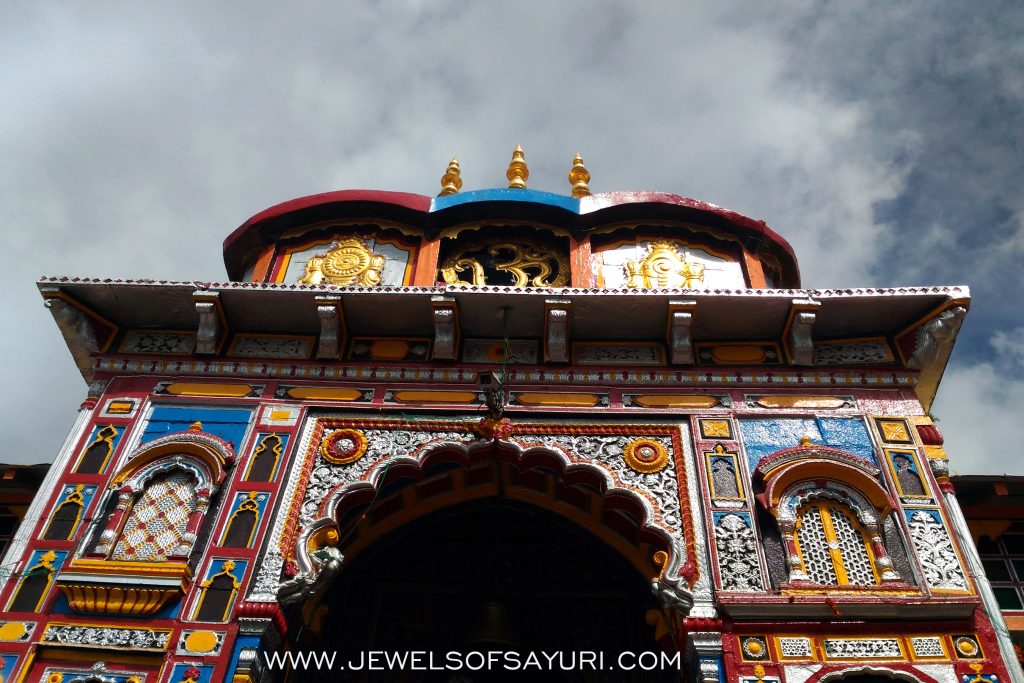
Badri Tree
The town has found mention in the Mahabharata as Badari (town of Badri) or Badrikashramam (Ashram at Badri). The word Badri here corresponds to that of Mahalakshmi, the Consort of Vishnu and thus the lord here is know as Badrinath (Husband of Badri). So how did the Goddess come upon this name? The story goes like this. Once Lord Vishnu and Lakshmi came upon these mountains and Vishnu started meditating as the sage Narada had rebuked him from indulging in worldly pleasure s and forgetting his duties. As the sun is often glaring in the mountains, Lakshmi felt very bad for her husband and took the form of a badri tree (Jujube or Plum) to shade her Husband while bearing the heat and then later the cold herself. When Vishnu opened he eyes, he saw his wife’s sacrifice and was moved. He sat down to press her feet to alleviate her tiredness. A Sage who passed by ridiculed Vishnu as he was a man pressing his wife’s feet. Vishnu gave back by pointing out that his wife had pressed his feet for eons and it was his husbandly duty he returned the favour from time to time.
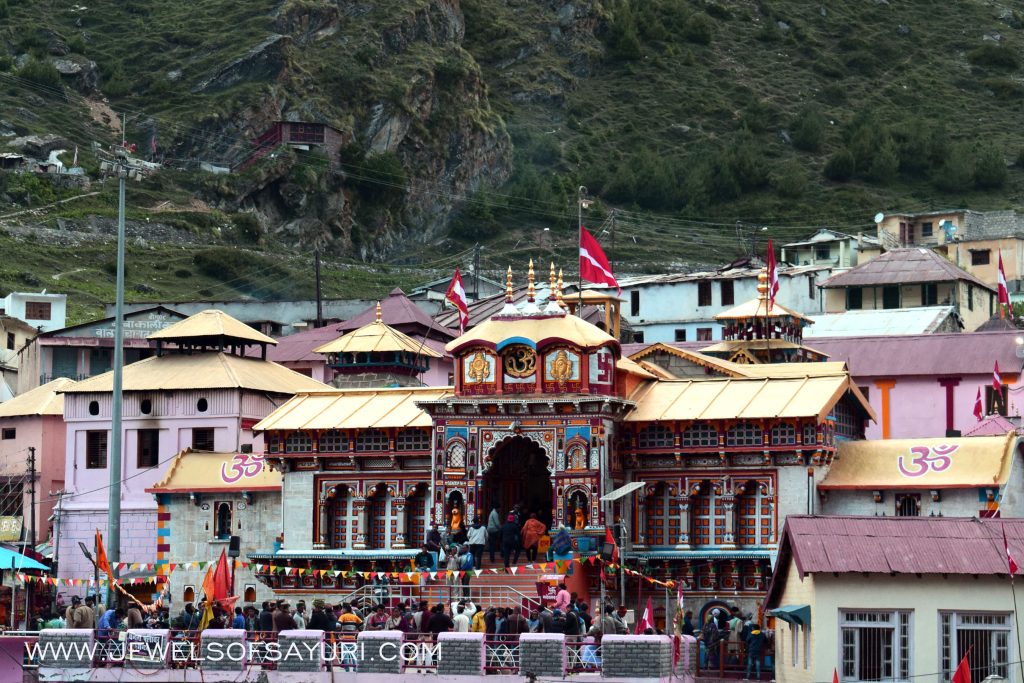
Adi Shankaracharya and Badrinath
Adi Shankaracharya the Advaita guru and the forerunner of the Bakthi movement, spent nearly 5 years meditating under the Kalpa Vriksha tree in Joshimath as a teenager. During his meditation he came to understand the importance of Vedas and set himself on a journey to restablishing them in the then Indian society. A major part of this was to build temples and establish governing rules. During one such meditation, he came to realise that the Saligram Idol of Badri vishal was languishing in the Alaknandha river. This would explain the marks on the idol’s face which can be observed only when you stay for a long time near the Sanctum’s door.
Shakaracharya not only reclaimed the idol but also rebuilt a temple and placed a Namboodri priest as its Rawal (head priest). Later, in the 16th century AD, the then king of Gharwal, built the present day temple and moved the idol there. Over the years, the town has grown around the temple, that the architecture now looks unique and the facade unlike any other temple in India.
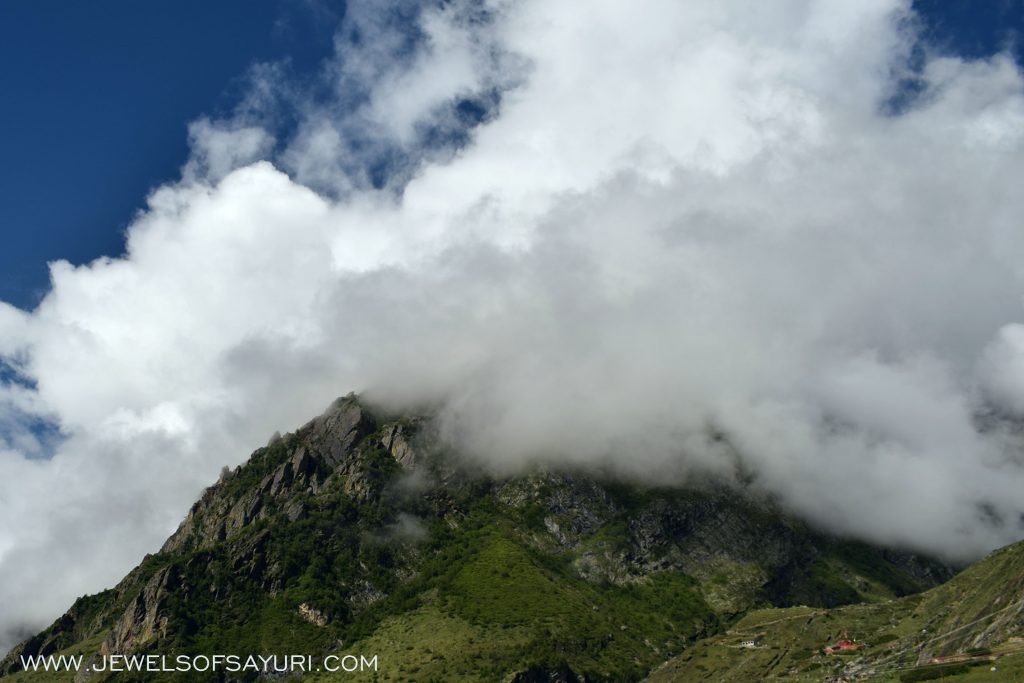
Nar Narayan
Nar and Narayan mountains stand guard as sentinels to the temple. These refer to the twin brothers and sages of the same name who came here to become disciples of Badri Vishal. These were no ordinary men but avatars of Vishnu who alternatively fought and did penance for over 10,00,000 years in an attempt to kill the demon Shaharakavacha (the one with a 1000 armours). The other stories about Nar – Narayan include creation of Urvashi and the epic battle with Prahalada in Namicharanya.
Things to do in Badrinath
Places to See
- Visit the Temple – You can buy tickets for various pujas and sit for a while or stand close to the sanctum if you do so. I recommend the Vishnusaharsanam puja at 6:30 PM where you can sit inside for over 40 minutes. In the evening and during paid pujas the free queue is not allowed inside the secondary santum; you can only see the idols from outside. Thus the queue is relatively short and fast moving. But in the mornings, the general queue is longer and goes from the side as people are let in in groups inbetween the schedules pujas. So plan your visit accordingly. Tickets can be bought at counter (for which you have to go through the main queue).
- Panch Shila – Take a look at all the Shilas or little hilllocks in various shapes around the main temple. They include Narad shila, Garud Shila, Narsimha Shila, Nar Shila, Varaha Shila and Markandeya Shila. Out of the five only three are east to spot.
- Visit Mana Village and Trek to see Saraswati river and Vasundhara Falls – Coming up in a separate post
- Bhoothnath temple – If you have time and energy trek to the Bhoothnath (Shiva) temple on a hill behind the Badri temple
- Trek to Alkapuri – This village is the the mythical city Alanka that was established by Kuberas. The Races of Yakshas and Gandharvas are said to inhabit this “City of the Gods” originally. It is a 12Km trek from Mana and requires a guide.
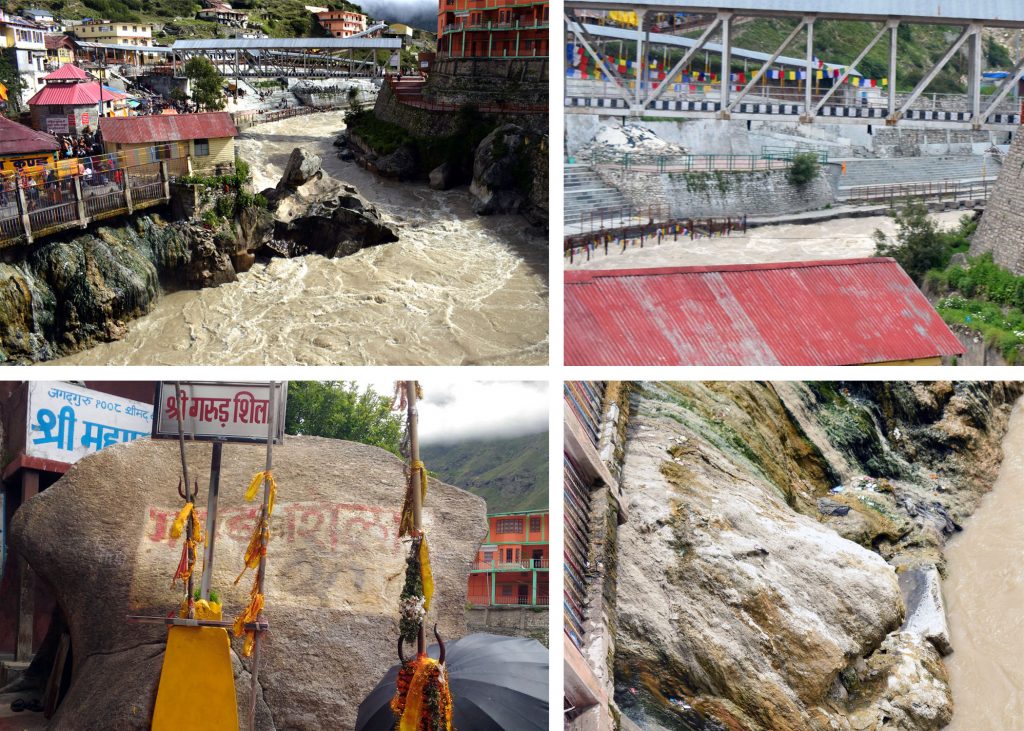
Things to do
- Take a dip in the Tapt Khund – These are (volcanic) sulphur springs and are seriously hot 55 °C (131 °F) but refreshing. There are separate ones for men (3 and partially covered) and women ( only 1 but covered). Though the khund itself is clean, the surroundings of the women’s tank was filthy with women urinating in the sewers there. Seeing a crowd of women fighting for their spot and considering the hot water, my mom was hesitant to take a bath there. I closed my eyes and took the plunge literally and figuratively and found the water to be clean and refreshing.
- Offer Prayers to your Ancestors – Brahma Kapal at Badrinath is considered one of the best places to do Shardh, pind dhan and offer prayers to your ancestors. Thought this is only done by men, there were a lot of pandhas pestering us to do it. This is a money making racket. Politely say no and keep walking if you are not interested. Schedule half a day if you want to do Pind dhan and find yourself a good priest. If not, simply pray for their souls and donate the money for free food distribution for the needy. You’ll feel more peaceful.
- Sing along at a Kirtan session – There is a Kirtan and discourse session happening every evening inside the temple accompanied by the playing of dhols and cymbals. Join in and sing your heart out
- Photography – This town is the perfect blend of quaint and crowd to take great pictures. If you are fortunate the peaks (Nar, Narayan and Neelkanth) with appear glowing at sunrise giving you unforgettable moments and fantastic pictures. Unfortunately, I could not see the Glowing Neelkanth at Sunrise due to mist which did not clear till the time I left Badri for Joshimath.
- Trekking – to the places mentioned above
Eat
Around the temple are various eateries that sell simple Veg food. Apart from Maggi, You will get Roti and various sabzis. At a hotel right next to the bridge to the temple you’ll get Dosas and other snacks.
Stay
There are no great places to stay as the town is locked up 6 months a year. Sarovar Portico and Narayan Palace have more facilities but they are a bit expensive and also a little far from the temple. GMVN’s Devlok (review link) is right opposite the temple parking lot and is clean but do not expect any facilities here.
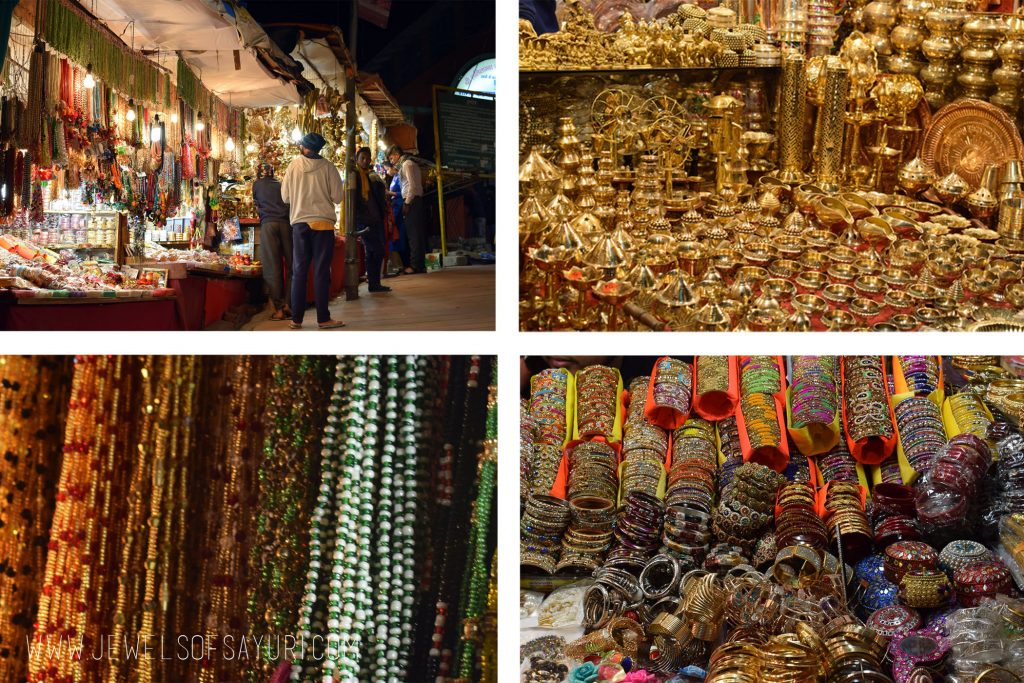
Shopping
Just like any other temple in India in the area surrounding the main temple, there are a plenty of shops selling cheap jewelry, beads, trinkets, brass lamps, bags, books, CDs, etc. You would also get Figures and photos of Gods and Goddesses.Bargaining is not just allowed but also expected. Specifically you can shop for the following
- Woolens & Winterwear – One can find here a plethora of fakes, slightly defective, factory surplus along with a bit of stolen/tax fraud goods too. Apart from several Indian brands, you can find items from past seasons of Gucci (I did, yay!), Nike, Puma, Tommy Hilfiger for fraction of their price. You just have to know exactly what you want and how much you are willing to pay for it. If you can help it, buy hand knitted woolens – caps, scarves and sweaters at Mana and buy dresses, jackets or coats here.
- Antique coins – Several merchants who deal with vintage clothing, jewelry and coins display their wares during the day (I did not see them the previous night). I bought two large antique coins with patterns on both sides and verdigris on them. One had a Panch mukha hanuman on it (old 10 rupee coin) and the other was a French coin. I hope to make jewelry with them and on the lookout for stable open settings.
- Religious items – you can get holy waters of Alaknandha, Saraswati and Ganga here. You would also get brass puja items, clothing for idols, amulets, kumkum here.
- Laddu – Like Tirupathi, Badrinath is also famous for its laddu. Though round, it is only mildly sweet as it made of Rajgira (Ramdana – Amarnath grain) and jaggery which are locally grown ingredients. It costs Rs.120 (for a pack of 2) in person and Rs.195 online
Tips
We city folks are not used to the clean mountain air. Cover yourself well (Head, ears, chest, and back) for the first hour or two until you are acclimatized to the altitude and the air. I only wore a sweatshirt with hood over a cotton kurta for the first 30 minutes and ended up with a horrible headache and wheezing. Thin sweaters and shawls are insufficient during evenings even in summer. During the day I could manage with just a kurta but that was on the next day after getting used to the weather. More tips in the last post of this series.
I hope that you would enjoyed about the places to see and Things to do at Badrinath and this virtual tour would entice you to actually make the trip.
I hope you found it interesting
Cheers



Leave a Reply